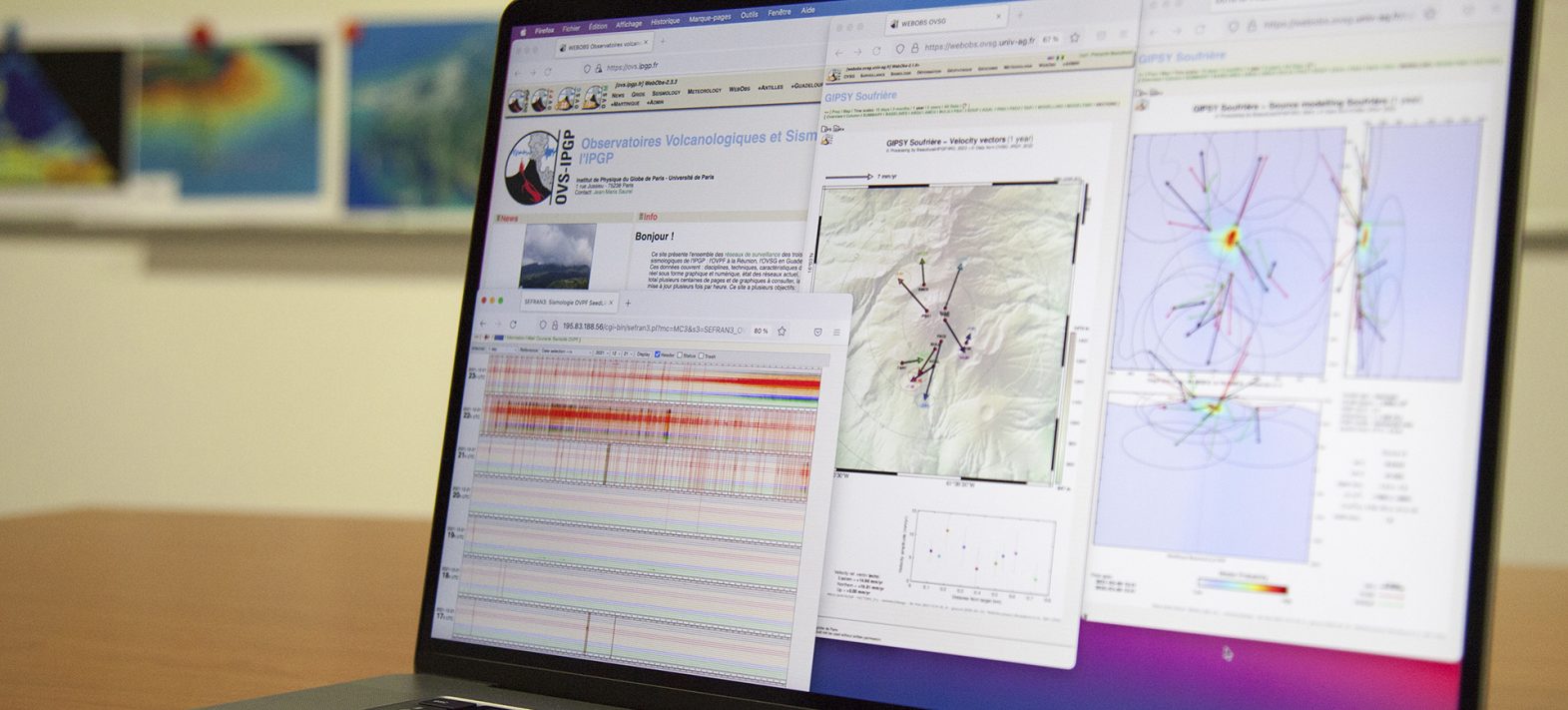The first edition of the Open Science Awards for Open Source Software in Research, presented by the French Ministry of Higher Education, Research and Innovation as part of the European Open Science Days on February 5th, 2022, recognized 10 French projects. These awards aim to recognize teams for their contribution to the advancement of scientific knowledge, and to highlight projects and research teams working to develop and disseminate open source software, helping to build a vital common good.
The WebObs tool designed by the IPGP’s volcanological and seismological observatories has been awarded an “Accessit” in the “Community” category of the Open Science prize for free research software.
Based on a web interface, this tool was initially developed by IPGP geophysicist François Beauducel in the early 2000s, when he was director of the OVSG-IPGP in Guadeloupe, to support the observatory’s day-to-day monitoring tasks. It was then rapidly adapted to the IPGP’s magnetic observatories, followed by the Martinique volcanological and seismological observatory, the Montserrat volcano observatory, the Piton de la Fournaise volcano observatory and, more recently, adopted by CVGHM, the national institute responsible for monitoring Indonesian volcanoes.
For almost 20 years, WebObs has been developed, maintained and distributed freely by IPGP teams, in collaboration with their scientific partners in France and abroad (IRD, CVGHM, EOS, etc.).
An integrated, multidisciplinary, multi-language system
WebObs is an integrated system for multidisciplinary data management and centralized, automated, real-time volcanological monitoring. The platform, developed using several programming languages to optimize its performance, enables unified management of data from the various disciplines (seismology, geochemistry, deformation, etc.) required for monitoring natural systems.
A multitude of tools are available, from the observatory diary to the management of the technical maintenance history of all instrumented networks, via configurable e-mail alerts. WebObs thus integrates all stages of monitoring, from station management in the field to data visualization and, in some cases, modeling of phenomena in real time.
Linking observation and research
One of the special features of WebObs is that it establishes a link between monitoring data and applied research. It offers modules for processing, complex calculations, modeling and dynamic visualization using real-time observation data streams. These tools make it possible to test the validity of new models and research hypotheses on real data, and to share these results with the community.
This automatic processing and analysis of multidisciplinary signals over long periods of time is essential to validate new tools for predicting observed phenomena, or to test the robustness of a calculation under real real-time conditions.
Scalable and used worldwide
Distributed via the GitHub platform, WebObs is currently used by the IPGP’s 4 volcanological and seismological observatories (Guadeloupe, Martinique, Réunion and Mayotte), as well as by a dozen observatories in Montserrat, Ethiopia, Indonesia, Singapore, Peru, Italy… It is also the data management and distribution tool for the Antilles erosion observatory (ObsErA).
As each type of observation data is managed by a dedicated module, it is possible to simply upgrade the system to adapt it to new data types or formats, and eventually use it to monitor other natural phenomena.
The award recognizes scientists’ investment in developing programs that are freely distributed to the community, as a research activity in its own right.
Find out more :
Ref : Beauducel F., D. Lafon, X. Béguin, J.-M. Saurel, A. Bosson, D. Mallarino, P. Boissier, C. Brunet, A. Lemarchand, C. Anténor-Habazac, A. Nercessian, A. A. Fahmi (2020). WebObs: The volcano observatories missing link between research and real-time monitoring, Frontiers in Earth Sciences, doi:10.3389/feart.2020.00048.








